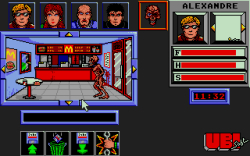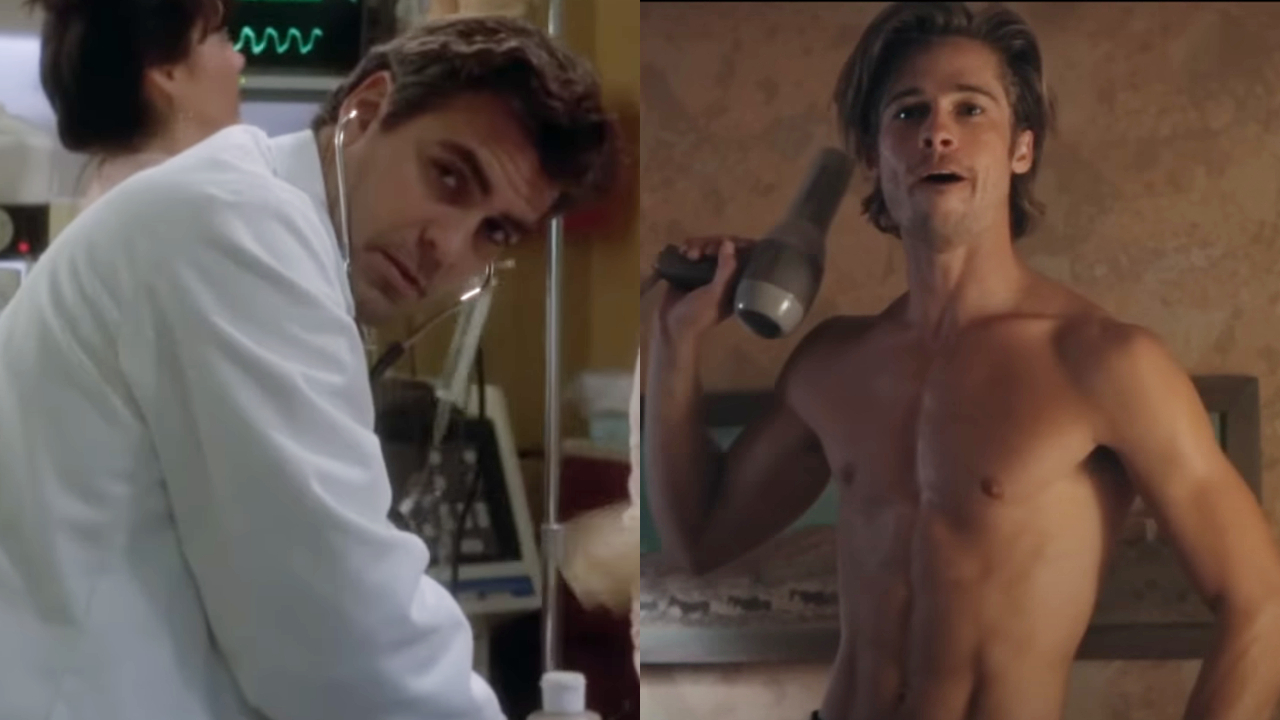Z-Day Approaches: A Look At The History Of Zombies In Games

Like their cinematic counterparts, video game zombies have slowly evolved over the years. Originally slow, shambling creatures that found power in numbers, today's zombie is a much different ghoul. Sometimes they exhibit super strength or speed. Sometimes they show a spark of intelligence. Other times giant tentacles pop out from where their head used to be. It's a good mix.
Warnings
The undead made their pixelated debut in 1984 with the release of Zombie Zombie on the ZX Spectrum. But the very first zombie game was much different than the ones we know today. In fact, you couldn't even blow their undead brains out. Instead, it was more of a strategy game. You flew around the city in a helicopter moving blocks around to create structures, and then tried to lure the undead into jumping to their deaths off of said structures.
Like any good undead monster, the zombies in the game had a thing for the taste of human flesh. And this was their ultimate downfall. In order to lure them to their death, you had to get up close to a zombie, then run like hell as they got a burst of speed and chased after you. And you had just one weapon at your disposal, a small air gun that would blast the zombies away from you for a short period of time.
Things got a little more violent with a game released later that year for the Commodore 64, Evil Dead. Based on the film of the same name, Evil Dead had players defending a remote cabin from an onslaught of zombies. Taking on the role of Ash, the goal was to shut various windows and doors to keep the zombie-creating mist from changing your friends, while at the same time disposing of the incoming zombies with swords, axes, and any other weapons you could get your hands on. In a gruesome twist, Ash even had to watch out for dismembered arms and legs that would come to life and attack him. In order to win you had to last the onslaught long enough to get the book of the dead and destroy it.
The Great Panic
The zombie-game epidemic quickly spread, with several games released in 1990. By far the weirdest was Zombie Nation for the NES. Initially, the premise doesn't sound so strange: a samurai warrior heads off to America in an attempt to fight a zombie infestation and collect a sacred sword. But when you learn that the samurai is a disembodied head who shoots stuff from his eyes and drops bombs out of his mouth, well things take a turn for the absurd.
Your Daily Blend of Entertainment News
Unlike most zombie stories, the ones in Zombie Nation weren't created by some dark magic or evil corporation. Instead, in the not too distant future (1999), an alien crash lands in Nevada and causes the undead uprising. Now the goal wasn't to actually kill all the zombies, but to destroy specific buildings and then rescue the zombie hostages inside. This, in turn, would give the samurai more power to continue his quest.
That same year French-developer Ubisoft released its first-ever game, a point-and-click adventure dubbed Zombi. Essentially, the premise was exactly the same as George A. Romero's 1978 film Dawn of the Dead: in the midst of a zombie outbreak four people attempt to find refuge in a shopping mall. Players had to guide the four characters through the mall, collecting items necessary for survival and, of course, putting bullets into any unfortunate zombie that should cross your path.
What made the game interesting though, was the attention to detail. You explore the mall at your own pace, checking out guns shops, sleeping in bed stores, or even hitting the food court. But you also had to make sure you disposed of zombie corpses properly, lest they come back to life, and avoid hand-to-hand combat as much as possible since it tired your character out considerably.
Homefront USA
In 1993 the fight had moved to that most dangerous of areas, the suburbs. In Zombies Ate My Neighbors, players had venture through different areas--including a mall, grocery sore, and even an ancient pyramid--in order to find and rescue your neighbors. What were you rescuing them from? Well, the undead of course. But this time around the slow, shuffling creatures were joined by other classic horror monsters as well. These ranged from the standard vampires and werwolves, to more absurd villains like a giant, towering baby. Unfortunately, like many games from that era, the game was subject to much censorship, particularly in the SNES version. Like Mortal Kombat before it, this version of the game had the color of all blood and gore changed--in this case to green--in order to make things a little less gruesome. In some regions the name was even changed to simply Zombies, in an attempt to shift focus away from all of the neighbor eating.
A year later, Digital Pictures attempted to make things a little more real with the release of Corpse Killer. The game--which was released for popular systems like the Sega CD, 32X, and 3D0--was of the full-motion video variety, and included many of the features common to the zombie film genre, namely terrible acting, bad production values, and boring gameplay. Essentially, Corpse Killer was an on-rail shooter set on a tropical island overrun by the undead. While some of the walking dead were of the slow moving type, others would run directly at you, and some had the ability to jump great distances. A few even showed some sparks of intelligence, as they would toss skulls as a form of attack. But what the zombies weren't--in spite of the games Mature rating--was scary in the least. The game featured very little blood and the zombies looked like low-rent versions of Jim Carrey's character in The Mask.
Total War
The increased graphical fidelity afforded by the 32- and 64-bit generation of consoles led to a boom in zombie-themed games, which of course was led by the release of the first Resident Evil game in 1996. Despite it's clear B-movie roots--what with its live-action opening and truly awful voice-acting--the game was actually able to elicit some scares. This was largely do to both the creepy atmosphere of the giant mansion, as well as some of the gameplay mechanics.
Your characters moved incredibly slow and awkwardly, making the lurking zombies that much more threatening, in spite of their slow speed. And since ammo and other resources were quite limited, the game could feel stressful at times as you had to make sure you made that headshot, or else you were zombie food.
Of course, the success of the first game led to numerous spin-offs and sequels, but while the earlier games in the franchise maintained the B-movie horror elements of the original, more recent releases have done just the opposite. The not-quite-zombies of RE4 and 5 were smarter, faster, and more cunning than their predecessor's, as the developers seemed to be borrowing from more recent films like 28 Days Later.
Some games, such as 2006's Dead Rising, actually do a good job of combining the two. Like Zombi, the game borrows liberally from Dawn of the Dead with its mall setting. The goal of the game is to survive in the mall for three days. But while the zombies--and there are a lot in the game--are typically slow and stupid during the day, things change at night. As the zombies eyes would inexplicably turn red, they would also become stronger and faster.
This trend seems to have continued, as more recent zombie games feature the fast-paced, more violent 28 Days Later-style undead. The prime example of this is Left 4 Dead. This first-person shooter requires four players to come together in order to survive an onslaught on the infected. But these aren't your slow, eat-your-brain zombies. They are the more recent breed, and seem intent on just one thing: ri
This change in the way zombies are portrayed has also had an effect on the way players are able to interact with them. More often that not the in-game characters are much more agile, have access to better weapons, and are basically more empowered to defend themselves. And this is important, since you don't want to be fudging with controls or inventory when a horde of infected is barreling down on you. That is, unless you're playing Resident Evil 5.
Goodbyes
Of course, zombie games have become so popular now that they populate more genres than just the typical horror game or shooter. There are tower defense games like the adorable Plants vs Zombies, twin-stick shooters like Burn Zombie, Burn, and even quirky strategy titles like The Last Guy, which has players guiding groups of survivors to safety in the middle of an infested city.
Zombies now come in all shapes and sizes, and can range from classic horror movie troupes to more modern interpretations. But in spite of their steady evolution over the years, the way we dispatch of the undead has remained relatively intact: nothing beats a good ol' shotgun blast to the face.
